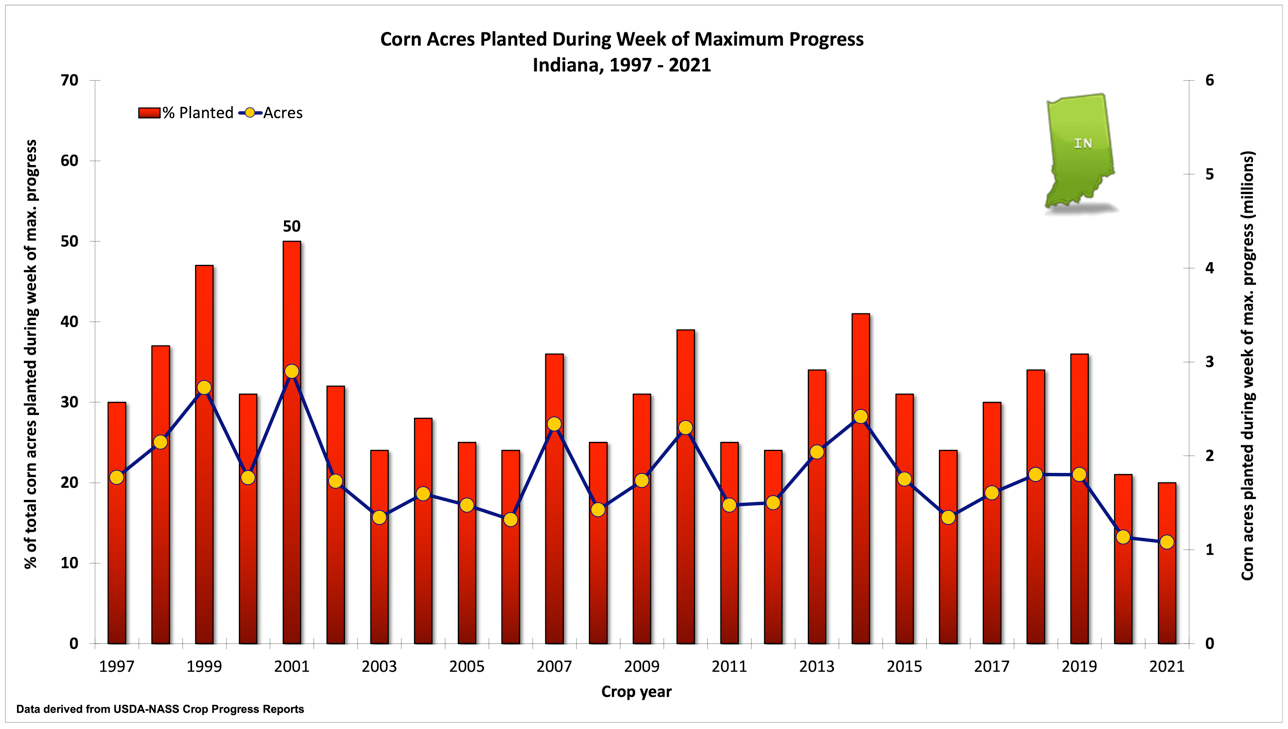
The number of 30-, 40-, and 60-ft wide (or larger) field crop planters across the U.S. Midwest is greater today than, say, 25 years ago.


The number of 30-, 40-, and 60-ft wide (or larger) field crop planters across the U.S. Midwest is greater today than, say, 25 years ago.

Corn grain yields in the U.S. have steadily increased since the late 1930’s.
MULTI–YEAR SUMMARY OF CORN RESPONSE TO NITROGEN FERTILIZER This report summarizes corn yield response to fertilizer nitrogen (N) rate in field–scale trials conducted around the state of Indiana since 2006. These results are applicable to N management programs that use efficient methods and timings of N fertilizer application. The Agronomic Optimum N Rate (AONR) represents the total amount of fertilizer N (including starter N) required to maximize yield, but not necessarily profit. The AONR in these trials varied among regions of the state from about 211 to 254 lbs N / ac, depending partly on soil organic matter and soil drainage characteristics. At five Purdue Ag. Centers where we conducted paired trials of corn following soybean (corn/soy) and corn following corn (corn/corn) from 2007 to 2010, the average AONR for corn/corn was 44 lbs greater than for corn/soy while average corn/corn yields were 18 bu / ac less than the[Read More…]

Corn yield response to increasing nitrogen (N) rate follows the Law of Diminishing Returns – as higher and higher increments of N are applied, the increase in grain yield becomes smaller and smaller (Figure 1). Eventually, maximum yield occurs and applying more N does not increase yield any further.
Corn yield response to increasing nitrogen (N) rate follows the Law of Diminishing Returns – as higher and higher increments of N are applied, the increase in grain yield becomes smaller and smaller (Figure 1). Eventually, maximum yield occurs and applying more N does not increase yield any further.

Starter 2×2 fertilizer in corn does not consistently increase grain yield but frequently reduces grain moisture at harvest by as much as 1.5 percentage points.
Phosphorus (P) and potassium (K) recommendations are made based on results of recent and representative soil samples.

This report summarizes corn yield response to fertilizer nitrogen (N) rate in field-scale trials conducted around the state of Indiana since 2006. These results are applicable to N management programs that use efficient methods and timings of N fertilizer application.
Frankly, today’s agricultural world is teeming with misinformation, half-truths, pseudo-data, bogus ideas, and sincere but incompetent researchers.

Sulfur (S) deficiency is becoming more common in Indiana crops because, in part, S deposition from coal-fired power plants has been reduced.
© 2025 Purdue University | An equal access/equal opportunity university | Copyright Complaints | Maintained by Pest&Crop newsletter
If you have trouble accessing this page because of a disability, please contact Pest&Crop newsletter at luck@purdue.edu.